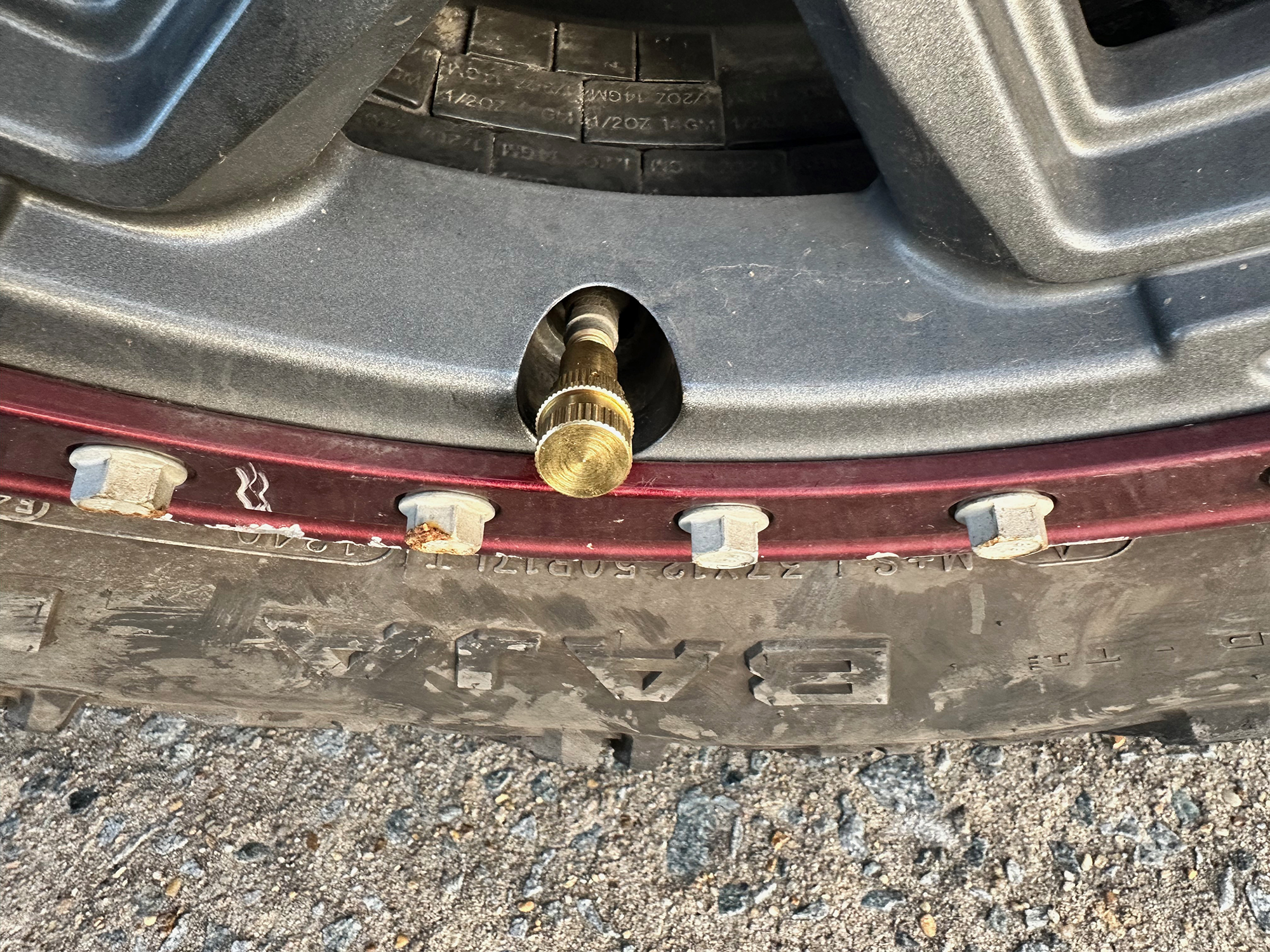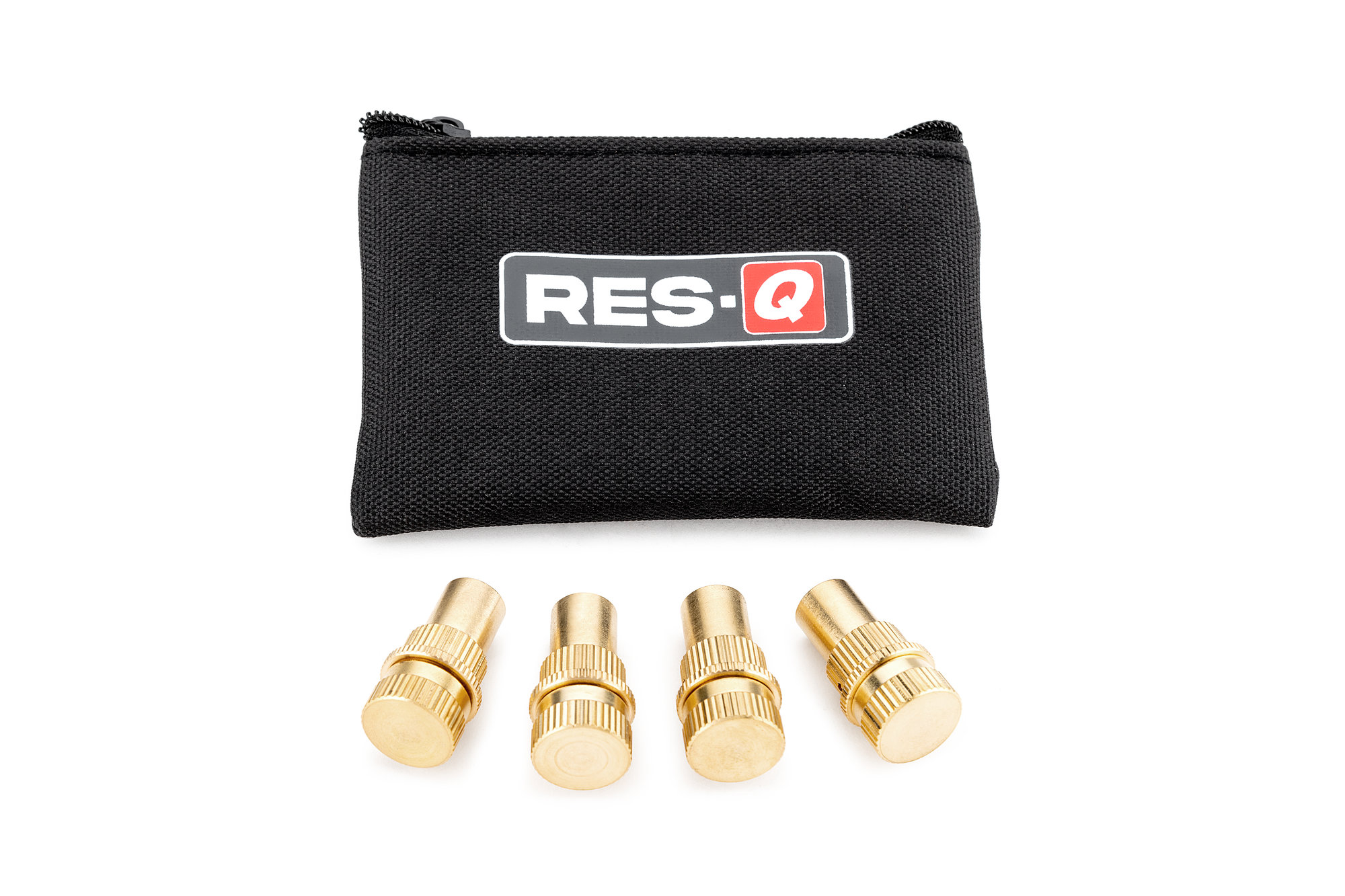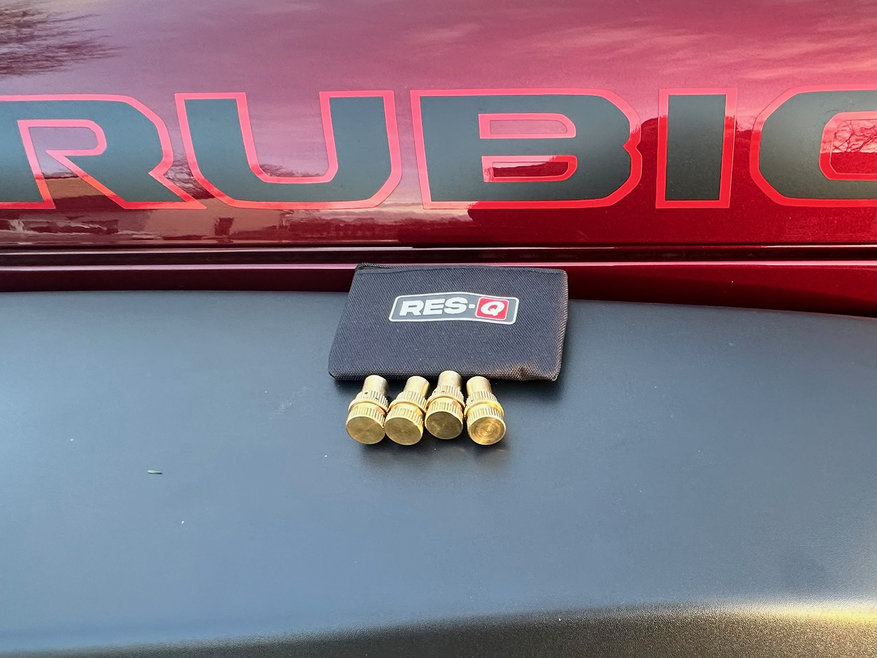by Matt Konkle
Managing Editor
The sound of escaping air at the trailhead, or around the off-road playground parking lot, is pretty much akin to the pop of a baseball meeting a leather glove pocket before a game. Or squeaking shoes clashing against a wooden floor warming up for a basketball contest.
It is something that just has to happen to your tires before you head out on the trail and take on an off-pavement environment.
Why?
Well, if you are new to the off-road world, the short answer is releasing air out of your tires will allow them to better conform to the surrounding terrain. You can find out more in our Airing Down Tires For Off-Roading article.
Now, there are plenty of ways to air down your tires, but if you are like most people out there, you don’t want to spend a lot of time hunched over each wheel checking tire pressure. You want to get them to the right PSI and get on your way to an enjoyable day.
That’s why these Res-Q Tire Deflators work perfectly towards that goal.
First off, they are going to be easy to find because they arrive with a handy carrying case. I keep mine in the glove box, but the center console or even a tool bag in the cargo area can work as well.
Second, it is a complete four-pack of deflators. So you can attach each one to a respective valve stel, open the adjustment cap, and they will all drop to your pre-set pressure. No more using one device to only do one tire at a time.
Trust me, once you do this for the first time, you’ll never go back to that other deflator with a hose and gauge. And, most likely, anyone around you who still has that per-tire air down thing, will probably want to know all about these Res-Q deflators as well.

Third, the initial set-up process is pretty simple. Individually deflate each tire and use a pressure gauge to ensure each one reaches your preferred PSI. Then, make sure the adjustment cap on each Res-Q deflator is fully closed and attach to each valve stem.
Slowly open the adjustment cap clockwise until air starts escaping, and then immediately close the cap. Next, turn the deflator’s lock ring counterclockwise until it firmly contacts the adjustment cap. This will calibrate the deflator to your desired tire pressure and the unit is designed to lock in pressure between 10-30 PSI.
Once that pressure is dialed in, each deflator will automatically shut off when they reach that PSI for every subsequent air down, so you’ll be able to use all of them at the same time without worry.
Of course, you may need help determining what tire pressure you want to use when off-roading. Personally, I run my Mickey Thompson Baja Boss A/T tires anywhere from 12-15 PSI for the most part, but many things could affect that amount for you. Wheel type, terrain, weather, vehicle weight and temperature can all play a part.
We cover a lot of those issues in our piece about How To Determine The Best Tire Pressure For Your Jeep.
Each Res-Q Tire Deflator is constructed from nickel-plated brass so they are not going to wear down any time soon. In fact, I’ve been testing them since last summer and have used them at the beach, before events at Anthracite Outdoor Adventure Area, at Nellis Off-Highway Vehicle Park in Nevada and in Moab, Utah — so all kinds of different weather conditions. And they still look fresh out of the box. Just remember to store away in the case when you are done airing down, and don’t leave one on a flare or tire groove.













